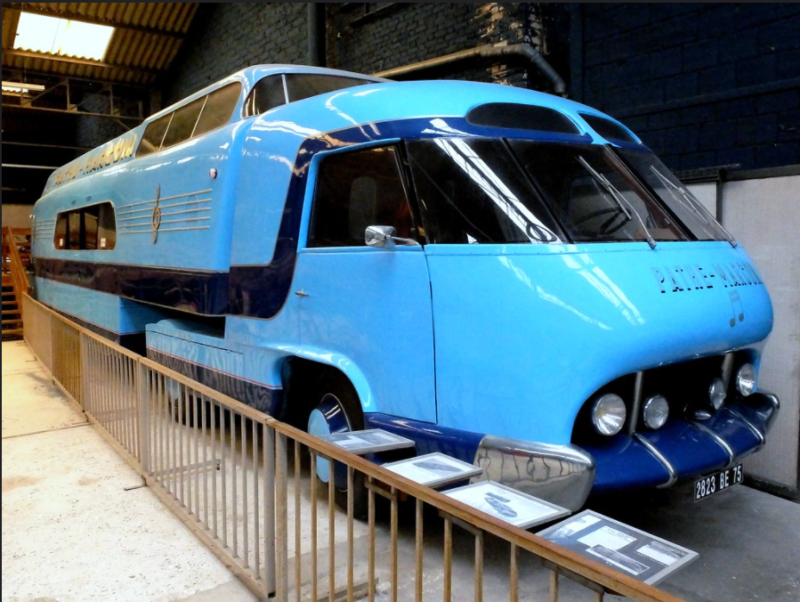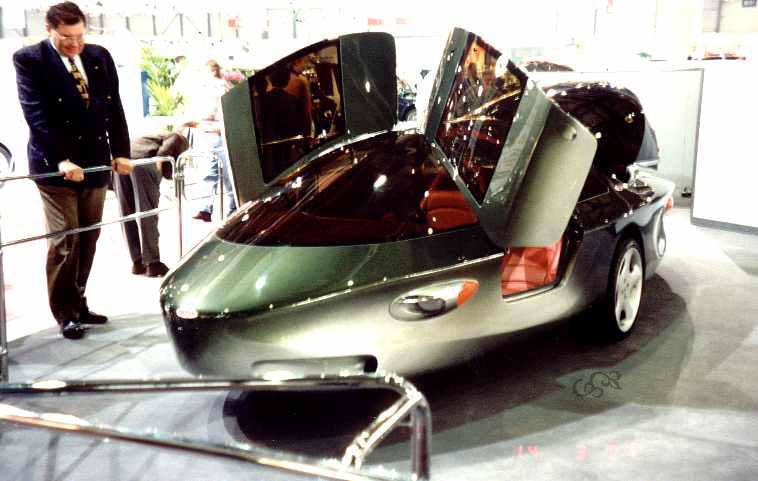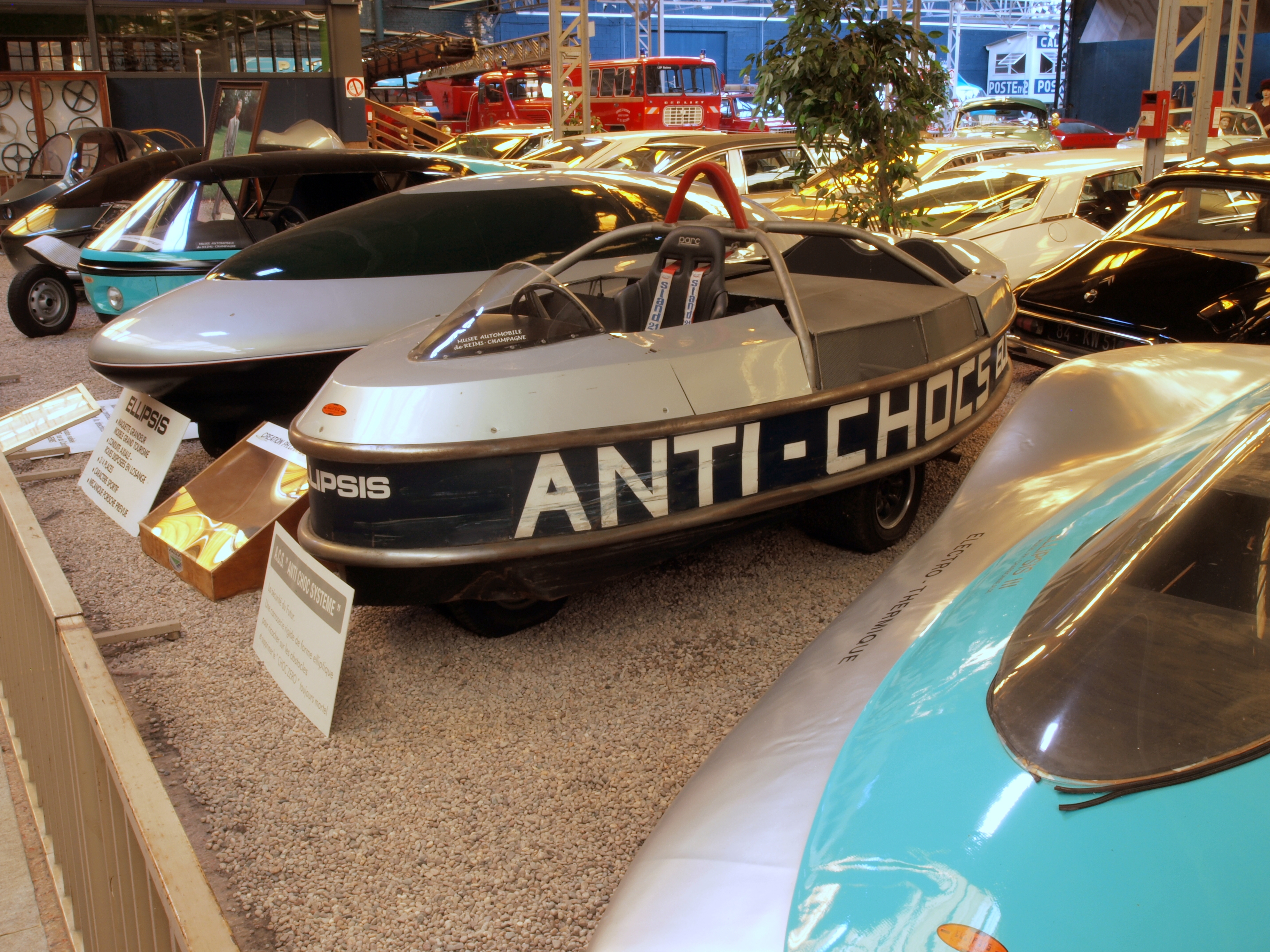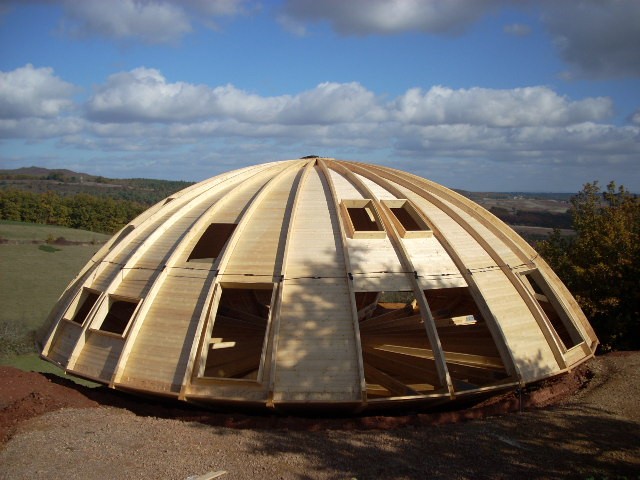Phillippe Charbonneaux
Philippe Charbonneaux French industrial designer
In 1985 Philippe Charbonneaux and Sbarro collaborated together
Specialized in & rsquo; automotive, Renault designer 16

Ellipsis I – Phillippe Charbonneaux in his Prototype
IN THE PARK IN SAINT-DIZIER
Three Ellipsis Cars different


Philippe Charbonneaux s & rsquo; is known for its d & rsquo drawings planes. In 1946 he becomes the stylist Delahaye. After studying in 1948 with Jean-Pierre Wimille a GT type of mid-engined car, he moved to the United States, Detroit, work a few months at the General Motors design center to design a sports car that is the Chevrolet Corvette.


PANHARD Semi-Trailer TITAN “Pathé-Marconi”
The ANTEM bodywork based on a design by Philippe Charbonneaux. At the Reims-Champagne Automobile Museum (F-51). The centerpiece of designer Philippe Charbonneaux's collection arrived yesterday at the Cité de l'auto in Mulhouse, it will join a sheltered platform of the Cité du train.
1949 : Pierre Bourgeois, President of Pathé-Marconi, agrees to order an exceptional vehicle.
1952 : the truck called "Superbus" is delivered to the French major and wins, in 1955, the grand prize of the rolling advertising competition.
1985 : resold toProvençal then at the Gulliver circus, the truck is saved in extremis from breakage by the Charbonneaux family who renovates it and exhibits it in Reims.
2016 : the "Superbus" joins the Cité de l'auto in Mulhouse.
On his return, disappointed by US working methods, it s & rsquo; set up his own in Paris and presents 1951 Delahaye 235 modern forms pontoon.
He then transforms an R16 into a three-box version like the Renault 25 much later. Both cars n & rsquo; had no industrial action. With the magazine & rsquo; Anthology Automotive, he returns 1970 in & rsquo; history of the automobile body and creates a museum dedicated to the & rsquo; French car near Saint-Dizier and Reims.
Besides the famous brush "Fanny" dust still in production, he formed his style office 50 Rue Copernic in Paris with Paul and Michel Bracq Vioche, and draws highways, toothbrushes Vademecum, forklift, home appliance, toys, lampes Wonder, Bull computer, advertisements on the place of sale, awakenings JAZ, TVs including the famous Téléavia Panoramic 111, Star fans, Pyrobal stove and many & rsquo; other things.
It also creates vehicles, the most striking : Citroën Traction Avant 15-Six of President René Coty, Salmson the 2300S Tray, Citroën 2CV sports coupe and numerous advertising for Astra trucks brands, Pathé-Marconi (such as the famous Superbus aujourd & rsquo; hui kept in the Cité du train, the National Museum of the City of & rsquo; Mulhouse car), BICs, Army of & rsquo; air or Formica destined for France to turn the caravan. In 1959, it presents an advertising truck for Onduclair will be the first of its kind, with cab, followed & rsquo; a car-governed for RTF, Bernard on chassis that will foreshadow new productions.
Called by Renault to change the R8, he created the style4 office before making the R16 with the concept of a two-volume sedan “5 doors” and with a hatch is a first for the time. Heavyweight side, he made for the firm Bernard 1961 a new form of car that will be imitated by many, then to Berliet fire engines, the bus floor of Paris, the gazelle of the & rsquo; army and Stradair who cut radically with other productions.
From 1990 at 1998, he created diamond wheels prototypes and present the world of & rsquo; Automotive and Geneva show: les Ellipsis, Ellipsis 1 – Philippe Charbonneaux 1991
Philippe Charbonneaux collections were stored for 15 years Charbonneaux museum of Reims and maintained by the & rsquo; Reims Champagne Association.
End 2015, they were the & rsquo; & rsquo subject; a donation to the National Museum of the City of & rsquo; Mulhouse car. The twenty cars and the Pathé-Marconi Superbus donated by Hervé Charbonneaux, son of the designer are aujourd & rsquo; hui preserved.
He is the younger brother of Paul Charbonneaux, Colonel of the & rsquo; army of & rsquo; air and Companion of the Liberation.
The first Ellipsis has been unveiled at the & rsquo; in Automotive 1992 , and won a great media success. there was in all and for all, Sept Ellipsis, all different, including number III which could claim a CX of 0,11, unveiled in March 1993 Geneva Motor Show, with d & rsquo; an electrothermal propulsion.



Jean-Pierre Wimille 5923RS prototype, 34cv 160kmh Ford V8.
Designer Philippe Charbonneaux
Sbarro, Charbonneaux
Ellipsis 1997


This very special vehicle was designed and created as d & rsquo; a scale model in 1994, by the designer and French designer Philippe Charbonneaux, aujourd & rsquo; hui alert octogenarian who was present at the & rsquo; inauguration of the educational center Espera Pontarlier, in September 1995, where specifically included, among other projects, said model. This car, now embodied in the & rsquo; Espace Sbarro, has a double advantage, according to the original concept: d & rsquo; a very thorough aerodynamics (in & rsquo; like the Wimille in central pipe and central-rear engine, by Philippe in Charbonneaux 1946, with d & rsquo; an astonishing Cx 0,21 !), l & rsquo; Ellipsis is ovoid with wheels in diamond pattern.

L & rsquo; s interior & rsquo; Ellipsis has three seater with central driving. The tapered shape of this vehicle reminiscent of a shark, allows, collision, d & rsquo; s & rsquo dodge, obstacle, insofar as the & rsquo; & rsquo absence; edges and d & rsquo; angles on the car n & rsquo; offer virtually no control in & rsquo; object encountered; with the effect of instantly deflect & rsquo; Ellipsis off course and, Therefore, limit in unimaginable proportions, the adverse consequences arising d & rsquo; a collision “traditional”. Powered by a Porsche Carrera 3.6 liters and equipped d & rsquo; a Tiptronic, placed in rear position, l & rsquo; Ellipsis is provided with & rsquo; a large trunk (due to the vehicle length, due to its ovoid). About 1100 kg, l & rsquo; machine is equipped & rsquo; maneuverability allowing it to rotate in a road steering angle 160 degrees.”
L & rsquo; an essential principle of Ellipsis studies, preceded by the oval model, consists in their implanted diamond wheels. A choice justified by what Philippe Charbonneaux called, in the mid 1980, the “Zero shock”. After having collected for several years and studied thousands of photos of road accidents, it is concluded that & rsquo; it was, priority, minimize the effects of shock cars together, usually at d & rsquo; an offset frontal impact or a fixed obstacle. To achieve this, avoid that & rsquo; they s & rsquo; s & rsquo fit together; one in & rsquo; other, but do that & rsquo; instead they slide and be diverted. For it, their bodies should not offer d & rsquo; right angle or large frontal area.
The concept includes a front and rear steering wheel and the two central wheels. From this premise derive d & rsquo; other benefits, starting with an aerodynamic incomparable. Another strong point maneuverability, equal size, they need half the space to carry half a full turn.


In 1985, Philippe Charbonneaux and Franco Sbarro had collaborated to design a Renault 25 notchback. Twelve years later, they presented their new joint project : l’Ellipsis. The latter is then the seventh prototype designed by Philippe Charbonneaux around & rsquo; an old idea already : ovoid and wheels in diamond pattern. This prototype 3 places, powered by a 6 Porsche cylinders, reached the theoretical maximum speed 300 km / h thanks to a carefully honed aerodynamics. La Sbarro Ellipsis, and three other older Ellipsis, is on display at the museum & rsquo; Reims car. North Vaudois Journal Sample 27 February 1997.
© Philippe Mercier / France 3 Champagne-Ardenne
Phillippe Charbonneaux imagined the concept and revealed it at the Retromobile Auto Show in Paris 1992.












Does anyone know what the chassis was for the Squale? Tube frame or monocoque? Steel, aluminium or composite? Was it ever road legal? What speed rating did those small front and rear tyres have?